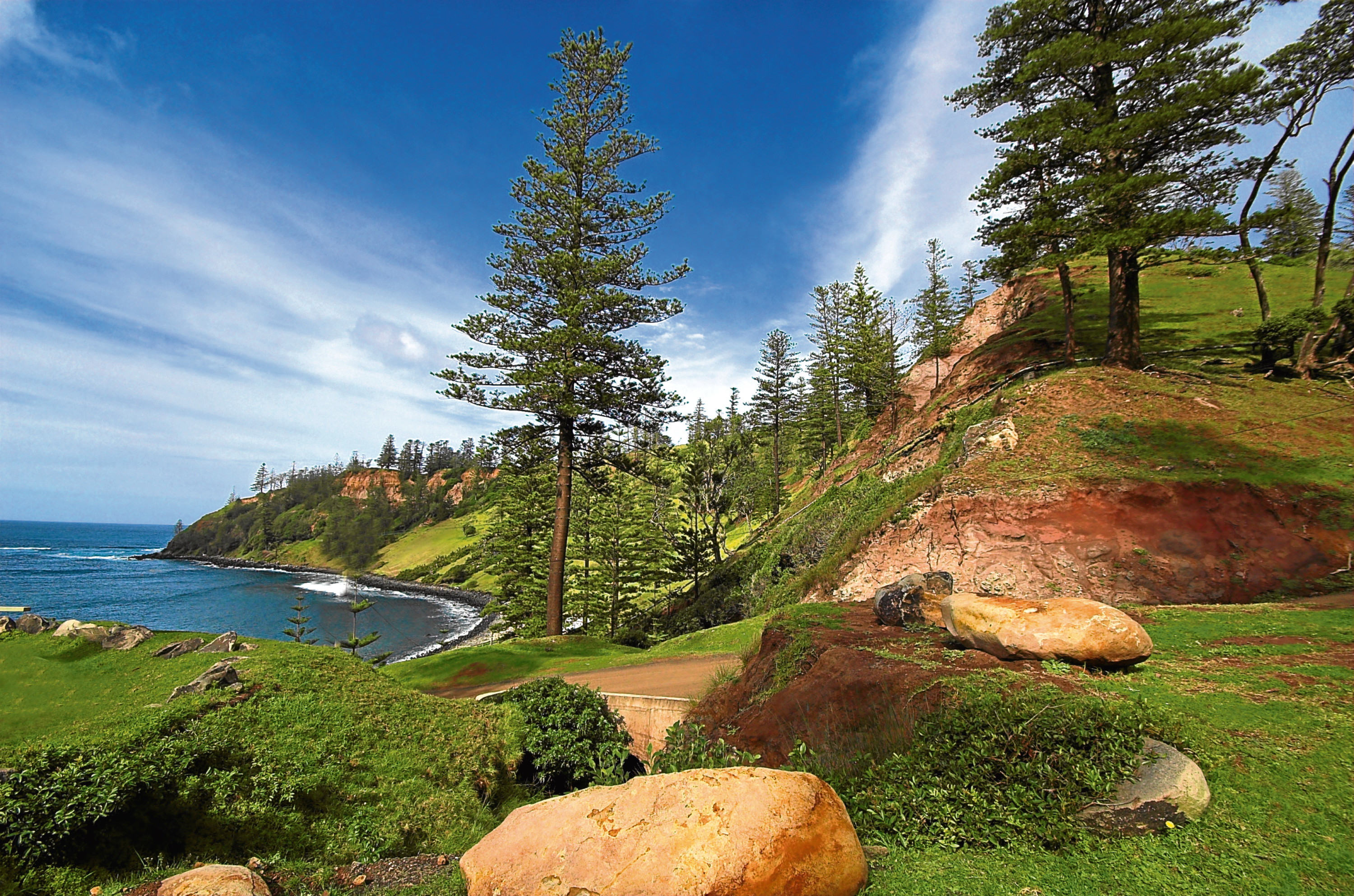
ALAN MURRAY is an acclaimed historian and novelist from Edinburgh, but has lived in Australia, New Zealand and Japan for the past 25 years.
He has published eight non-fiction books and recently branched into fiction.
His debut, Luigi’s Freedom Ride, was widely praised and his latest, The Turncoat, a thriller set in Glasgow during the Second World War, is published by Freight Books on October 20.
NORFOLK ISLAND is a speck of South Pacific tranquillity, 1000 miles east of the Australian mainland.
My heartstrings were first tugged more than 30 years ago when my wife suggested a break there.
The island has World Heritage listing and, since that first visit in the mid-80s, we’ve returned more times than we can remember.
There’s no easy answer to what makes Norfolk extra special.
Probably it’s a mixture of history, the breathtaking beauty of the island’s 23 miles of coastline, the brightly-coloured parrots that perch like Christmas tree decorations on the towering Norfolk Island Pines, and the friendliness of the islanders.
Some of them can trace their family tree back to the sailors who seized control of HMS Bounty in 1789 and fled to Pitcairn Island until their children and grandchildren were resettled on Norfolk in 1856.
The surnames of the mutineers are still common on Norfolk – Christian, Quintal, Adams, McCoy.
Sadly, Norfolk was no paradise for the Scotsman McCoy. He set up a still and ended his days as an alcoholic.
Others on the island were no strangers to terrible suffering.
Between 1788 and 1855, Norfolk was a brutal penal colony that housed prisoners from what is now Australia.
These days, memories of the cruelty and barbarism of the convict days are counterbalanced by the gentle pace of life on Norfolk.
The Church of Saint Barnabas, with its magnificent William Morris stained glass windows, is the perfect place to reflect.
The nine-hole golf course is the ideal place to, between strokes, take in the view of the ebb and flow of the vast Pacific Ocean.
Of course, there’s much more to Norfolk. There’s deep sea angling, spectacular walking tracks, the enchanting Emily Bay beach, and fish and chips at the lawn bowls club.
No wonder, then, that it’s our favourite holiday spot.
READ MORE
Brisbane shows Australia with a true tartan twist
Scots woman flies 10,000 miles to Australia to give sister stem cell donation

Enjoy the convenience of having The Sunday Post delivered as a digital ePaper straight to your smartphone, tablet or computer.
Subscribe for only £5.49 a month and enjoy all the benefits of the printed paper as a digital replica.
Subscribe